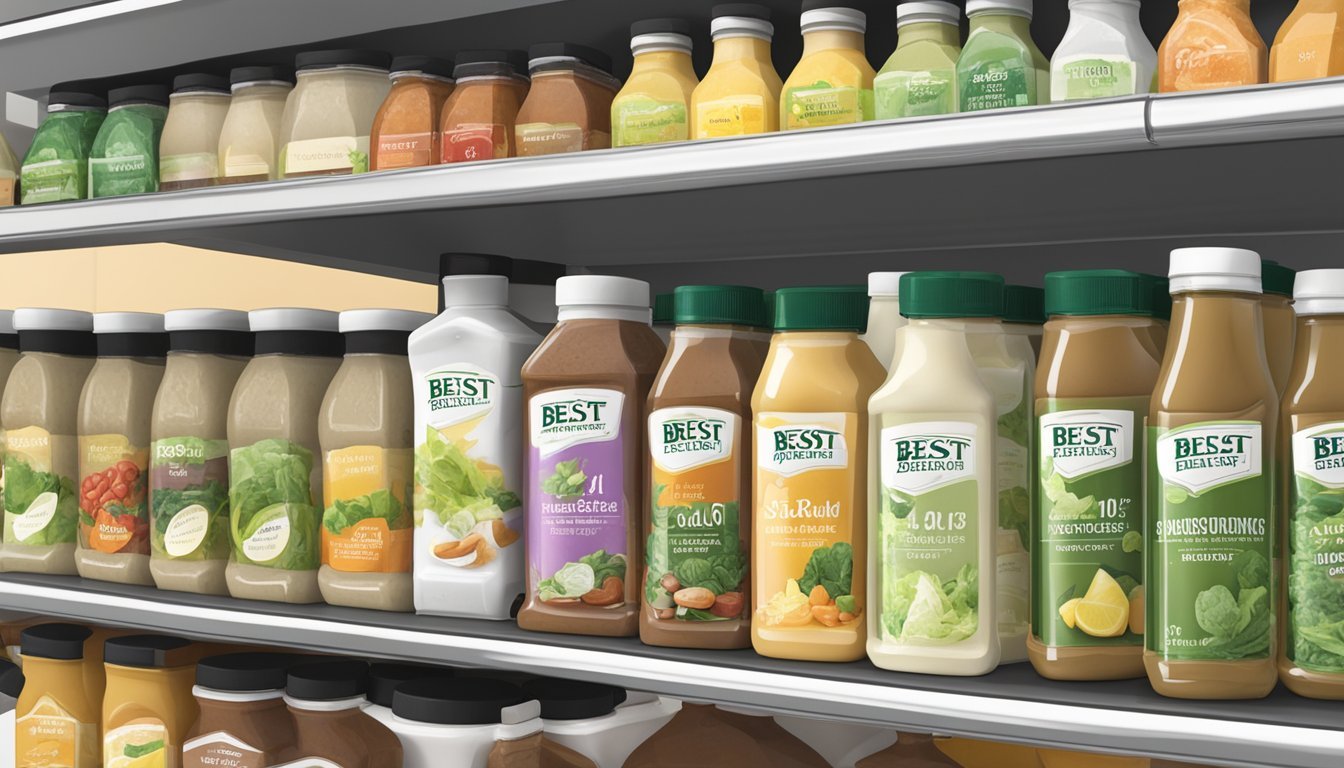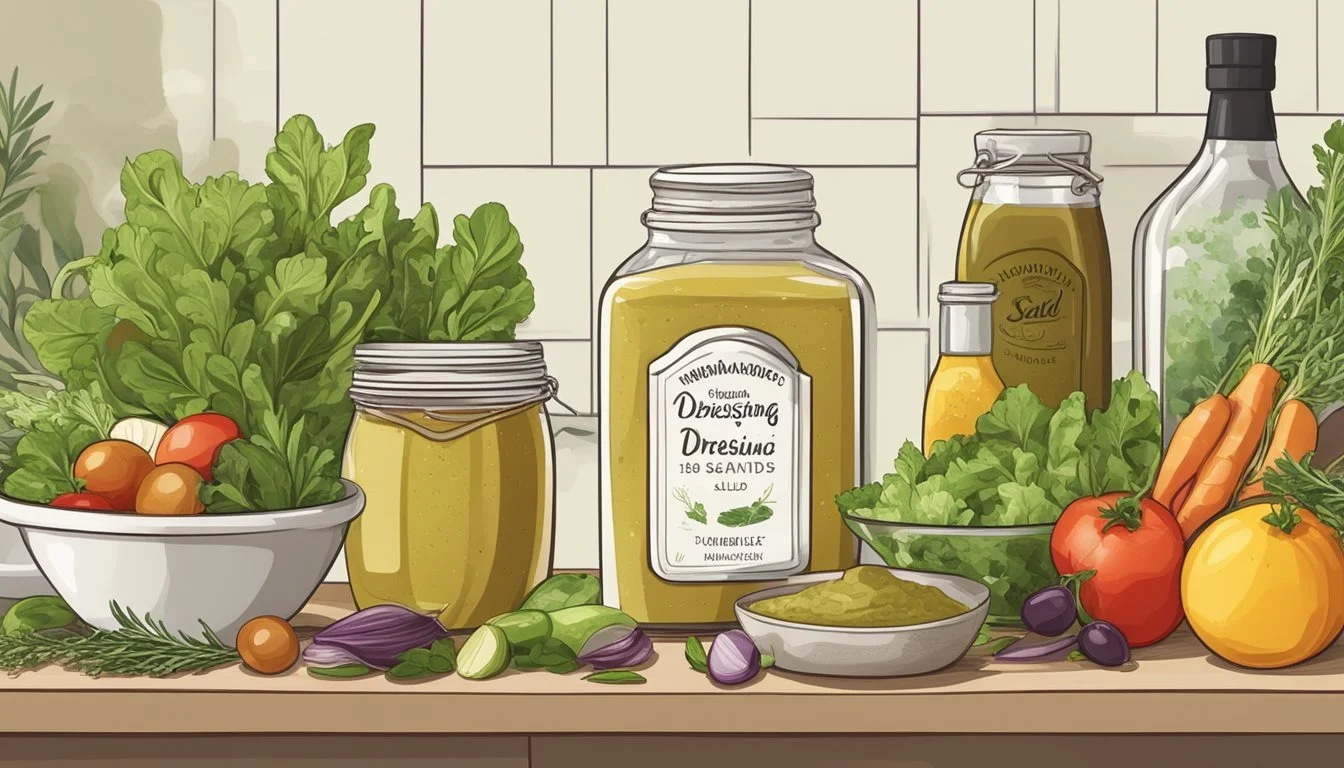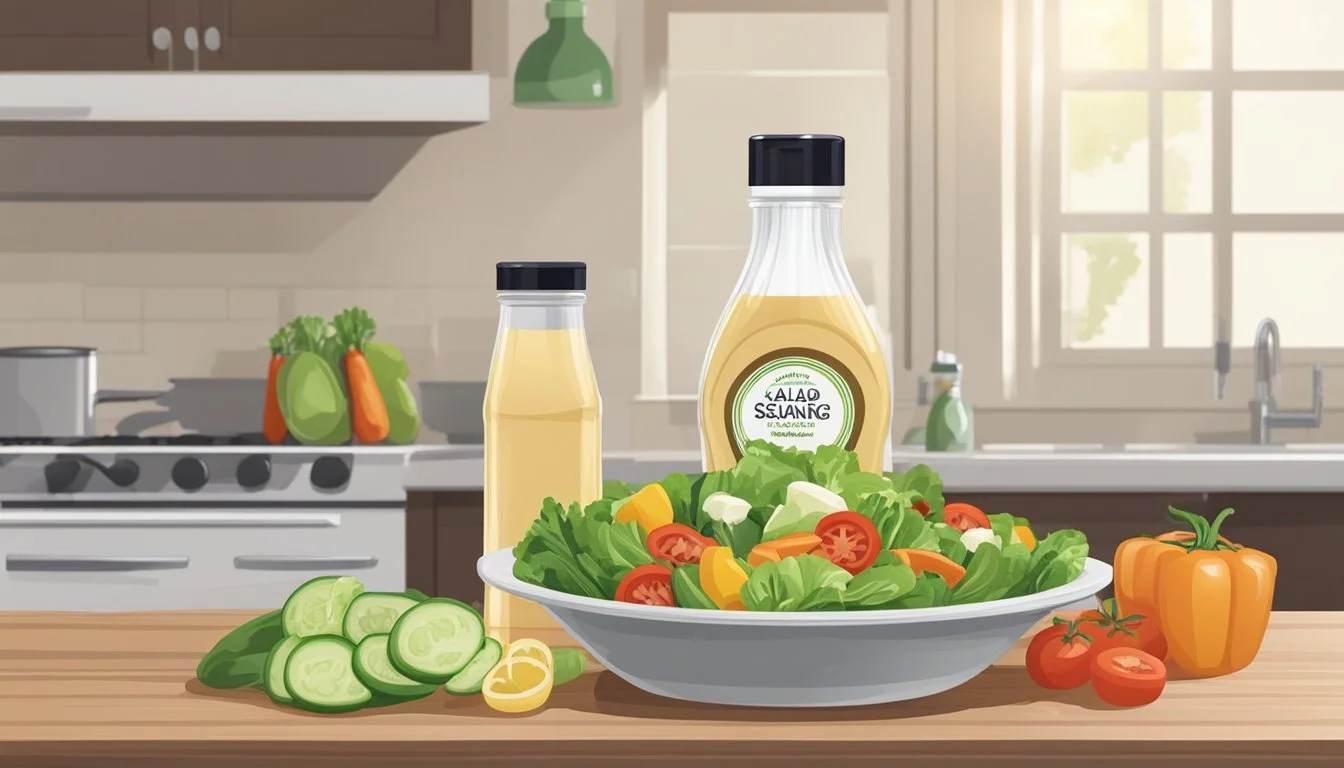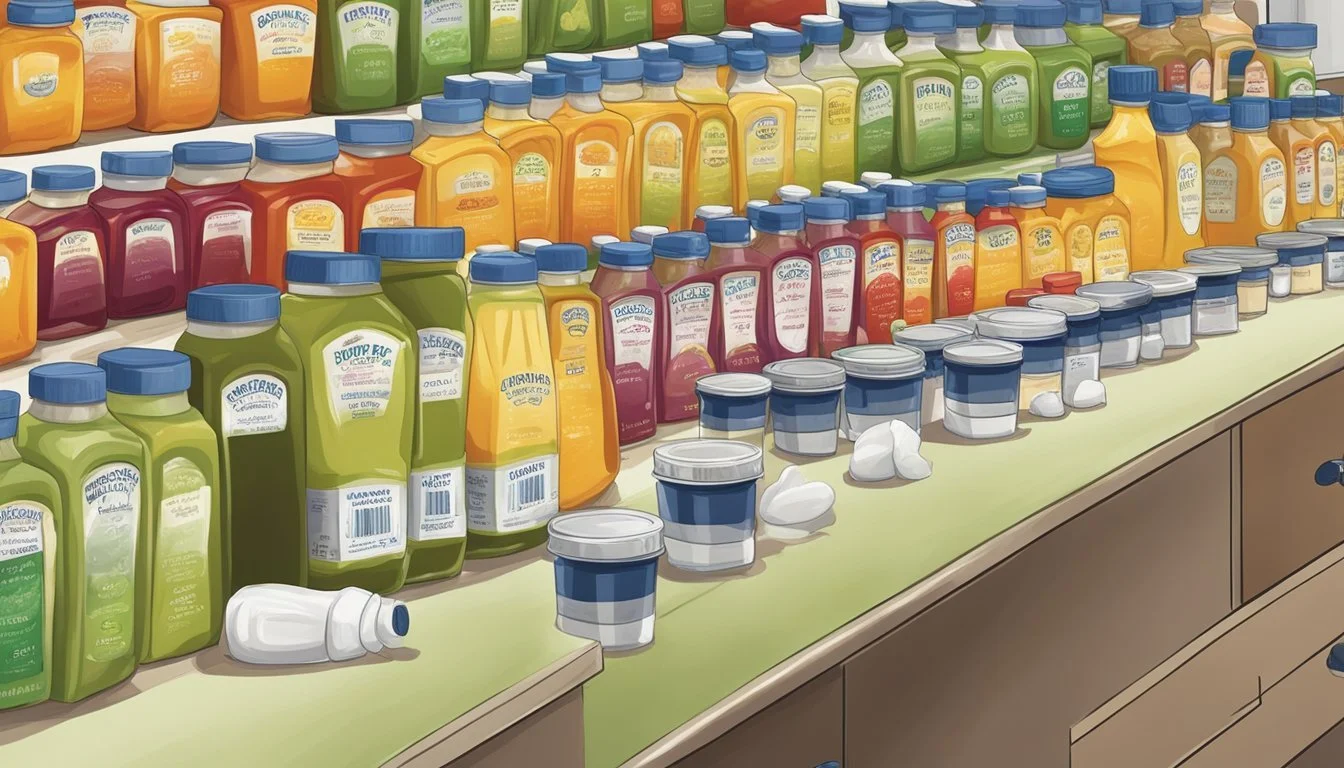How Long Do Pre-Made Salad Dressings Last?
Shelf Life and Storage Tips
Understanding the longevity of pre-made salad dressings is crucial for both food safety and quality. Salad dressings, whether store-bought or homemade, can vary significantly in their shelf life depending on their ingredients and storage conditions. Store-bought dressings come with a printed expiration date, which provides a good guideline for consumption. Typically, these dressings are formulated for a longer shelf life due to the presence of preservatives. Once opened, these dressings should be refrigerated and generally remain safe to consume until the printed date, as long as they're kept in proper conditions.
Homemade salad dressings, on the other hand, lack preservatives and thus often have a much shorter shelf life. Ingredients play a pivotal role; dressings with a high acidity level, like those made with vinegar or citrus juice, tend to last longer because the acidic environment is inhospitable to bacteria. Conversely, dressings containing dairy, fresh herbs, or garlic may spoil sooner due to the perishable nature of these ingredients. It's recommended to use homemade dressings within a few days to ensure both safety and optimum flavor.
For both types of dressing, any noticeable changes in smell, taste, or appearance serve as indicators that the dressing should no longer be consumed. A good practice is to pay attention to storage recommendations and to always err on the side of caution when assessing whether a salad dressing remains good to use.
Understanding Salad Dressing Shelf Life
The longevity of pre-made salad dressings hinges on various specific factors, including the presence of preservatives, the type of ingredients, storage conditions, and the labeling provided by the manufacturer.
Factors Influencing Shelf Life
Pre-made salad dressings can be split into two main categories: homemade and store-bought. Store-bought dressings generally last longer due to their preservatives, which inhibit spoilage. Homemade dressings, lacking these preservatives, have a shorter shelf life.
Key factors impacting the shelf life of pre-made salad dressings include:
Ingredients: Components like vinegar or citrus can extend shelf life due to their acidity, while dairy or mayonnaise can shorten it.
Temperature: Salad dressings should be stored in the refrigerator to maximize shelf life.
Sunlight and Heat: Exposure to sunlight and heat can degrade the quality; thus, a cool, dark place is ideal for storage.
Label Terminology
Understanding label terminology is crucial for determining the longevity of pre-made dressings. Here are some terms frequently used by manufacturers:
Expiration Date: This signifies when the dressing is no longer deemed safe to consume.
Sell-By Date: This indicates to retailers how long they can display the product for sale, which is useful in determining freshness.
Best-By Date: This suggests the timeframe within which the dressing should maintain optimal quality.
Manufacturers provide these dates to ensure quality and safety, where proper storage after purchase plays a critical role in maintaining the dressing within the ideal time frame.
Storing Pre-Made Salad Dressings
When it comes to extending the shelf life of pre-made salad dressings, proper storage is critical. Consumers can ensure both safety and quality by storing their dressings appropriately, either in the refrigerator or pantry, depending on the ingredients and preservatives involved.
Refrigeration and Food Safety
Homemade dressings, which typically lack preservatives, should always be refrigerated at 40 degrees Fahrenheit or below to preserve their freshness and prevent the growth of harmful bacteria. In fact, the shelf life of homemade vinaigrettes can range from three to four weeks when refrigerated, whereas those containing dairy, mayonnaise, or fresh ingredients have a reduced shelf life and should be used within one week.
Vinegar and oil-based dressings:
Last: 3-4 weeks when refrigerated.
Dressings with perishable ingredients:
Last: Up to 1 week when refrigerated.
Refrigeration is essential for maintaining food safety, particularly as some ingredients can become a breeding ground for bacteria like Salmonella and E. coli if left at room temperature.
Pantry Storage Tips
Certain commercially produced dressings are formulated to last at room temperature until opened, thanks to preservatives. These can be safely stored in a cool, dry pantry away from direct sunlight and sources of heat, which can degrade the quality and safety of the product. Upon opening, however, these dressings must be refrigerated and typically should be consumed within a set timeframe, as indicated on the label.
Unopened shelf-stable dressings:
Can be stored in the pantry.
Before opening: Store away from heat and light.
After opening: Refrigerate and follow label instructions for shelf life.
It is also important that the temperature in the pantry remains consistent, as fluctuations can affect the stability of the dressings, potentially leading to spoilage or separation of ingredients.
Different Types of Dressings and Their Lifespans
The lifespan of a pre-made salad dressing varies widely depending on its base composition and ingredients. Below is a detailed examination of how long different types of dressings typically last when stored properly in the refrigerator.
Oil-Based and Vinegar-Based Dressings
Oil-based dressings, such as those made primarily with olive or canola oil, and vinegar-based dressings, featuring balsamic, apple cider, or red wine vinegar, tend to have a longer shelf life. They can last up to 1 month in the refrigerator due to the preserving properties of oil and vinegar. These dressings may include:
Pure oil infusions
Dairy-Based and Mayonnaise-Based Dressings
Dairy-based dressings, such as those containing buttermilk or cream, and mayonnaise-based dressings generally have a shorter shelf life. They can last up to 2 weeks in the refrigerator. Key examples are:
Ranch dressing
Blue cheese dressing
Vinaigrettes and Citrus Infusions
Vinaigrette formulations, particularly those with added fresh ingredients like garlic or herbs, should be used within 3 to 4 days for optimal freshness. Citrus infusions, including lemon or lime, also fall into this category, as the freshness of the citrus flavor degrades quickly. These might include:
Balsamic vinaigrette
Lemon garlic vinaigrette
Signs of Spoilage
When assessing salad dressing for spoilage, one should pay close attention to visual cues and odor changes, as well as taste and texture alterations. These indicators are critical in determining whether the dressing is still safe for consumption.
Visual and Smell Changes
Changes in Color and Appearance:
A salad dressing that has gone bad may exhibit noticeable color changes. The once vibrant or homogenous appearance might turn dull or separated.
The presence of mold, indicated by fuzzy spots or discolored patches, is a sure sign of spoilage and the dressing should not be consumed.
Off Smell:
Fresh salad dressing typically has a neutral or characteristic smell according to its ingredients. An off smell, particularly sour or putrid, strongly suggests the product has spoiled.
Taste and Texture Alterations
Taste:
It's not recommended to taste salad dressing if it shows visual or olfactory signs of spoilage. However, a sour or off taste can be a clear indicator that the dressing is spoiled.
Texture:
The texture of salad dressing should be consistent with its type. If it becomes clumpy, gooey, or overly watery, these are indications of spoilage.
Bacteria growth in salad dressing can lead to spoilage, making it unsafe to eat and increasing the risk of food poisoning. If any signs of spoilage are present, it's best to err on the side of caution and dispose of the product.
The Impact of Homemade Ingredients
When it comes to homemade salad dressings, the presence of fresh ingredients can significantly influence their shelf life and flavor profile; fresh ingredients offer a burst of flavor, but they may also reduce how long dressings remain fresh.
Fresh Ingredients and Their Effect on Freshness
Homemade salad dressings incorporate a variety of fresh ingredients such as fresh garlic, herbs, and citrus juices, which contribute to a very delicious and vibrant taste. However, these ingredients are perishable and, therefore, can shorten the dressing's shelf life. Typically, a homemade dressing that includes such ingredients should be consumed within 3-4 days when stored in the refrigerator to ensure both safety and optimal flavor.
Preservation Without Preservatives
Unlike store-bought options, homemade dressings are often made without preservatives, resulting in a fresher taste that many consumers prefer. However, this also means that the shelf life is considerably shorter because preservatives play a crucial role in extending the longevity of food products. The absence of these means homemade dressings should be prepared in smaller batches and used more promptly. For those dressings based on oil and vinegar, the shelf life can extend to three to four weeks, provided they are stored properly in the refrigerator.
It's important to store dressings in airtight containers to prevent oxidation and refrigerate them to slow down the growth of bacteria. Homemade dressings can also be frozen for long-term storage. If choosing to do so, freezing in small portions allows for easier thawing and use without compromising the dressing's integrity.
Extending The Life of Salad Dressings
Maximizing the freshness and extending the shelf life of pre-made salad dressings hinges on correct storage methods. Adherence to these practices ensures dressings maintain peak quality for as long as possible.
Proper Storage Practices
Refrigeration: Store-bought salad dressings, once opened, should be kept in the refrigerator. The cold environment slows down bacterial growth, which can spoil the dressing. Consistent Temperature: Keep dressings at a stable, cool temperature away from light to prevent degradation of quality.
Sealed Containers: Transfer to an airtight container, such as a mason jar, if not stored in the original bottle. This practice reduces oxidation and contamination.
Olive Oil-based Dressings: These may solidify slightly when cold; allowing them to sit at room temperature briefly before use restores liquidity.
The Freezing Method
Freeze: Freezing can extend shelf life significantly, though it's less common. Use these steps for freezing:
Portioning: Divide the dressing into smaller portions to freeze, which prevents thawing the entire quantity each time some of the dressing is needed.
Airtight Packaging: Utilize airtight containers or freezer bags to shield the dressing from freezer burn.
Thawing: When ready to use, defrost in the refrigerator overnight; shake or stir well before serving to recombine any separated ingredients.
Making the Most of Your Dressings
Pre-made salad dressings offer versatility in the kitchen and can be used creatively to avoid waste. Understanding their shelf life and alternative uses can ensure these dressings are enjoyed to the fullest.
Culinary Uses Beyond Salads
Pre-made dressings like Italian dressing and vinaigrette aren't just for drizzling over lettuce. They serve as excellent marinades for proteins such as chicken, infusing them with flavor for dishes like chicken salad. A zesty Italian dressing can tenderize and add a herby punch to chicken before grilling, while a robust vinaigrette can brighten up grilled vegetables or act as a flavorful base for a pasta salad.
Utilizing Dressings Near the Expiration Date
When a bottle is nearing its expiration date, one can still safely utilize the dressing if it has been stored properly and shows no signs of spoilage. For unopened dressings, they often remain good for a short time past the printed date when kept in a cool, dark place. Once opened, ensure to refrigerate the bottle to preserve its freshness. One can incorporate these dressings into cooked dishes like casseroles or stews, where the high cooking temperatures can mitigate potential quality losses. Consider blending a creamy Caesar with mayonnaise to add depth to sandwich spreads or mixing a tangy vinaigrette with herbs to brush over roasted vegetables.







